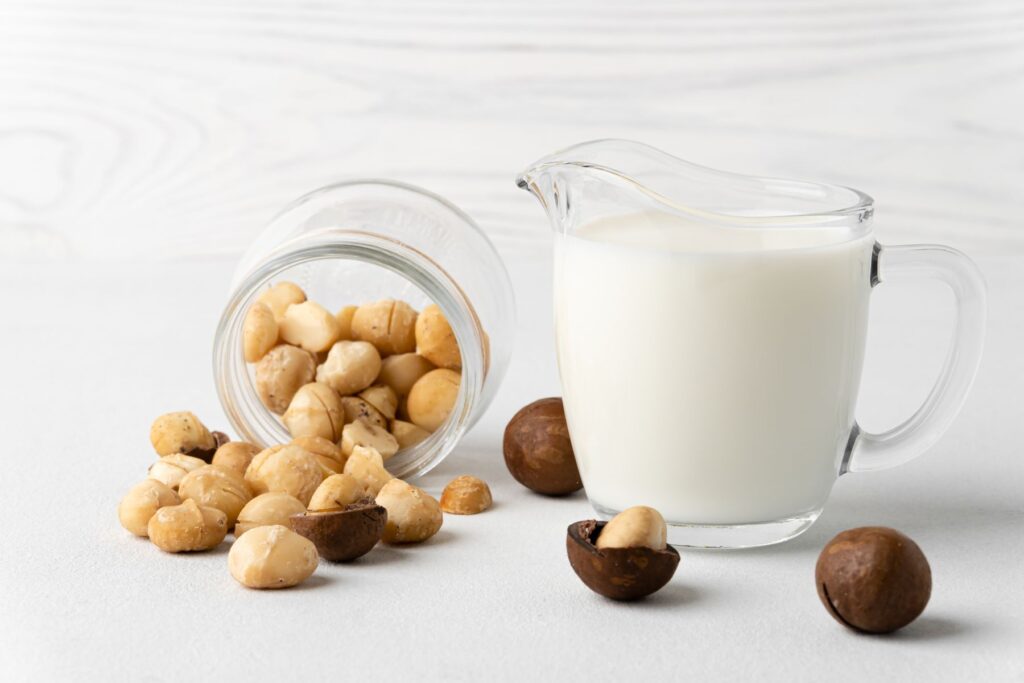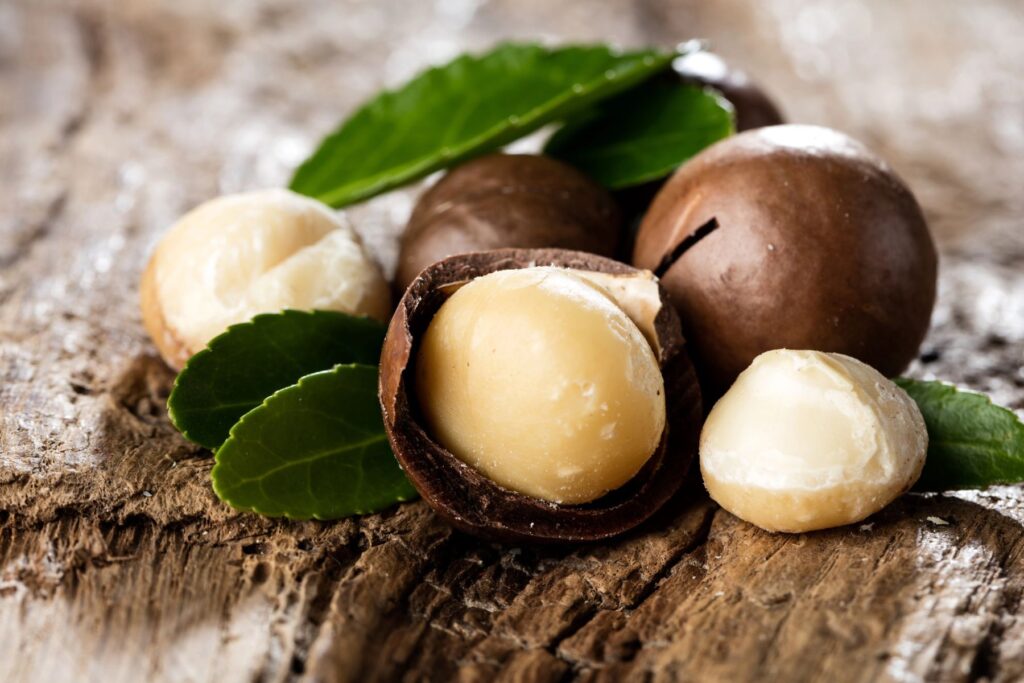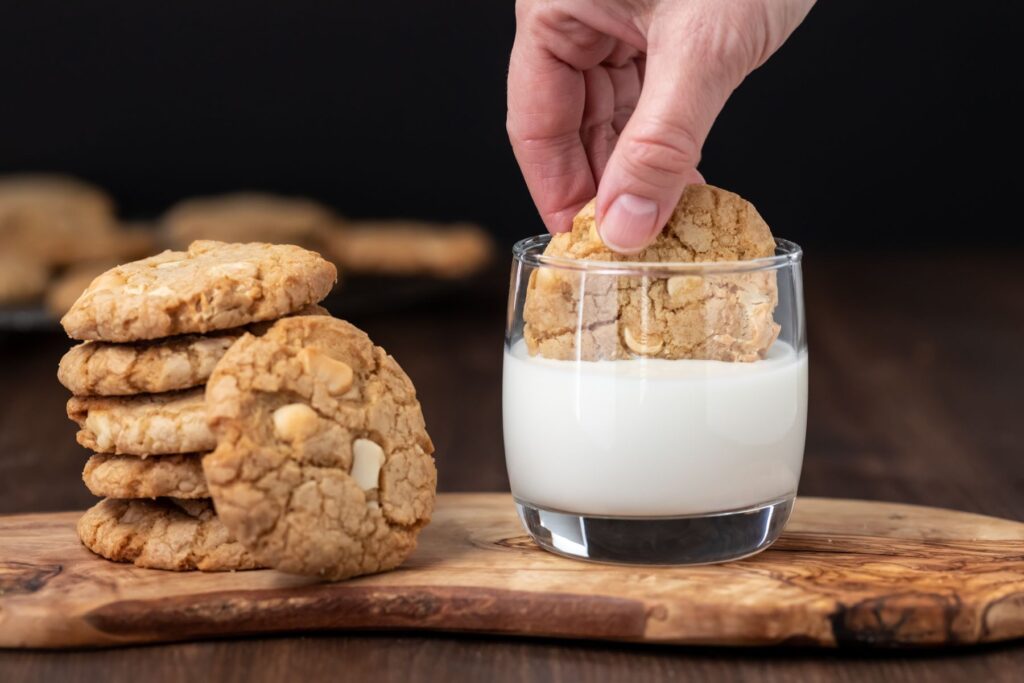Macadamia milk is a creamy, plant-based drink made from macadamia nuts that’s becoming more popular as a dairy-free alternative. Macadamia milk is low in carbs and high in healthy fats, making it a good option for those with allergies or simply watching their carbohydrate intake. Read on to see whether macadamia milk might become your new milk of choice.

The most noticeable thing that has won macadamia milk many fans worldwide is its smooth, rich texture that works well in coffee, smoothies and baked goods. This nutty beverage also offers a range of essential vitamins and minerals, including calcium, thiamine, iron and potassium. Store-bought versions sometimes have added nutrients to boost their nutritional value or stabilizers to improve shelf life and prevent separation.
You can even make macadamia milk at home. It involves soaking macadamia nuts, blending them with water and straining the mixture. Going the homemade route helps avoid the additives found in commercial products. Whether store bought or homemade, macadamia milk offers a tasty way to enjoy the benefits of this nutritious nut.
”I use macadamia milk as my plant-based milk of choice. It works great in almost all applications from baking to cooking. The taste is the same in baked goods or when used in cooking. It makes my morning latte super delicious and creamy!”
— Gwen Wolken, A Sweet Thyme
How macadamia milk is produced

Producing macadamia milk involves three main steps: Harvesting the nuts, processing them into milk and packaging the final product. Each stage requires careful handling to ensure quality and freshness.
Macadamia nuts are harvested when they naturally fall to the ground. Depending on the region, this usually happens between March and September. Farmers collect the nuts quickly to prevent spoilage.
The nuts are then dehusked to remove the outer green covering. This process exposes the hard brown shell that protects the edible kernel inside.
After dehusking, the nuts are dried to reduce moisture content. This is crucial to preserve the nuts’ quality and prevent mold growth.
To make macadamia milk, the dried nuts are first cracked open to extract the kernels. The kernels are then soaked in water for several hours to soften them.
Next, the softened kernels are blended with fresh water, creating a creamy mixture that forms the base of the milk. The blended mixture is strained to remove any solid particles, resulting in a smooth, creamy liquid that resembles dairy milk in texture.
The milk is then pasteurized to eliminate harmful bacteria and extend its shelf life. This process involves heating the milk to a specific temperature for a set time. After a cooling period, macadamia milk is packaged in sterile containers. These are typically cartons or bottles designed to protect the milk from light and air exposure.
Health and nutritional benefits
Macadamia milk rose to prominence because it offers several health benefits and a unique nutritional profile. It’s low in calories and carbs while providing healthy fats and essential nutrients.
According to Milkadamia, one of the leading commercial macadamia milk brands, macadamia milk has between 50 to 70 calories per cup. It contains 4-5 grams of fat, mostly healthy monounsaturated fats. Unlike other milk alternatives, this milk has about 1 gram each of protein and carbohydrates per serving.
For those concerned about dietary restrictions and allergies, Healthline assures that macadamia milk is keto-friendly due to its low-carb content. This milk alternative is naturally lactose free, making it a good choice for people with lactose intolerance. Its creamy texture makes it a popular option for coffee and smoothies.
While macadamia milk is free from common allergens like soy and dairy, it is unsuitable for those allergic to tree nuts and general nut allergies. Some commercial brands may contain additives or preservatives that could cause reactions in sensitive individuals. When buying this milk for the first time, read labels carefully and choose products with minimal ingredients when possible.
How to use macadamia milk in cooking

Macadamia milk adds a creamy texture and subtle nutty flavor to many dishes. It works well as a dairy-free alternative in both sweet and savory recipes.
For breakfast, try using macadamia milk to make creamy oatmeal or smoothies. It also pairs nicely with granola or cereal. Macadamia milk can replace dairy milk in most creamy drink recipes when baking. Use it for cakes, muffins, pancakes and waffles to add moisture and richness.
In savory cooking, macadamia milk works well in creamy soups and sauces. It can be used to make a dairy-free bechamel sauce or added to mashed potatoes for extra creaminess.
For beverages, macadamia milk makes an excellent base for hot chocolate or even pumpkin spice lattes. Its natural sweetness complements coffee drinks nicely. Desserts like puddings, custards and ice creams can also benefit from macadamia milk’s rich texture. It creates a smooth, creamy consistency without dairy.
Add a splash of macadamia milk to stir-fries or vegetable dishes to enhance their nutty flavor. It pairs especially well with tropical dishes.
Wrapping up
Macadamia milk offers a creamy alternative to dairy milk. This plant-based milk is rich in nutrients and suitable for people with digestive issues, like irritable bowel syndrome, and a low-carb diet. Its neutral flavor makes it a versatile ingredient, from sweet to savory dishes. With its sweet taste and creamy texture, Macadamia milk is often a barista’s preferred choice for latte art in cafes.
Ksenia Prints is a food writer, blogger, photographer and recipe developer from Montreal, Canada. She blogs at My Mocktail Forest, a blog focused on fun, flirty non-alcoholic drinks and recipes for entertaining.